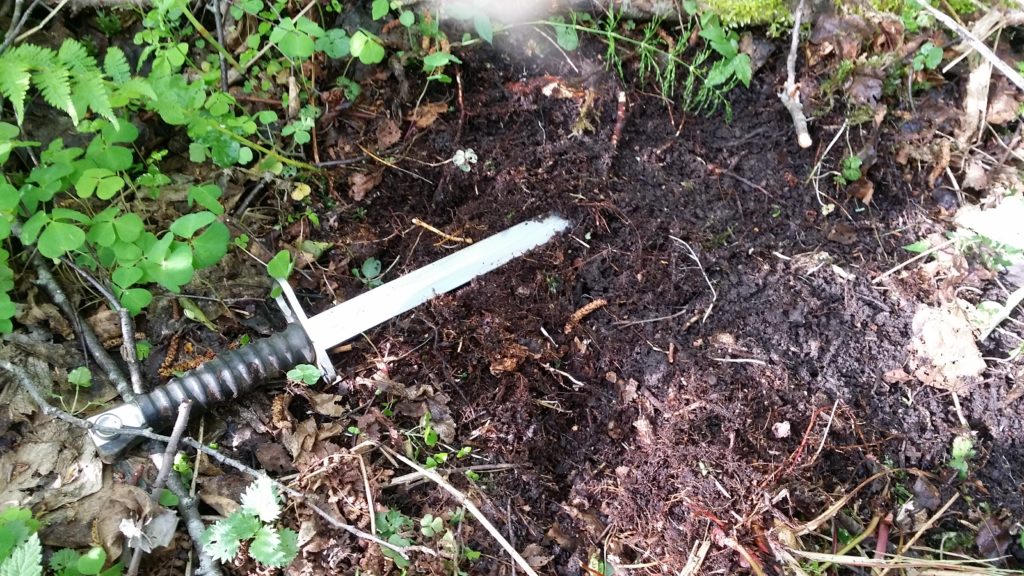The benefits of a bayonet in the forest
When going into the forest, I always take a bayonet knife with me. No, I don’t cut sandwiches with it, but poking it into the ground is just right. How it works? Very simple. An excellent color signal is often found in thick roots. It’s expensive to chop them, and it’s better to save your energy. And here a long knife comes to our aid. They should be used like a probe, i.e. It’s easy to pierce the ground until the source of the signal is detected. Then the object is carefully, with surgical precision, removed from the ground. No need to dig a huge hole, chop a bunch of roots, be smarter and more agile! There is less risk of damaging the find. After all, it’s such a shame that sometimes a valuable artifact is carelessly chopped across with a shovel with all the proletarian strength. Using the knife carefully, avoid such an annoying mistake.
Which knife will help us complete the task? Let’s look at it in order:
- Blade length. It is logical to assume that the longer the better. You have to reach the object in the ground, don’t you? 63~ We don’t consider coping with a deep-digger. For this you will need a dipstick. In normal cases, the length of the famous Mauser bayonet should be quite enough for you.
- Shape of the blade. The blade should be narrow, designed for thrusting. We are going to stick them into the ground, and not cut down bushes. A machete won’t help us here.
- Sharpening. The knife that we are going to use as a probe should not be sharp. A sharp knife will go into the roots like butter, forcing us to forcefully pull it back every time. This is a clear inconvenience. In addition, a sharp tip can easily scratch the find. We are definitely not interested in this.
The photo below shows a Swiss bayonet in action. In my humble opinion, this is a pretty good option for such a task. The blade is narrow and dull, but at the same time very durable. To bend it you will have to try pretty hard.

I post everything useful – tips, ideas and other tricks here.
